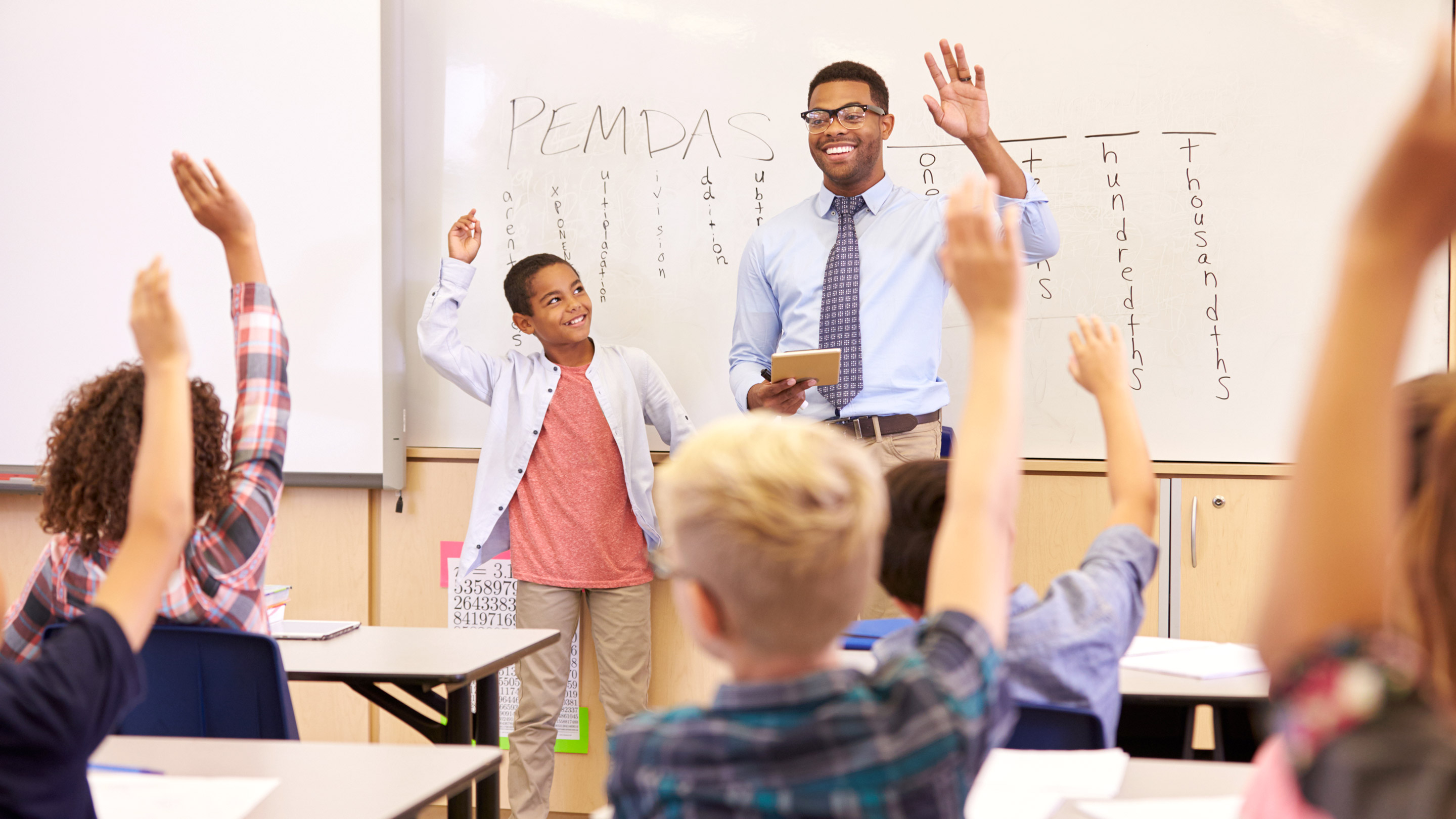Affordable Primary Science Tuition Singapore for All Learning Needs
Affordable Primary Science Tuition Singapore for All Learning Needs
Blog Article
A Comprehensive Guide to the Numerous Knowing Techniques in Primary Science Guideline
The exploration of diverse knowing methods in primary science direction offers an opportunity for instructors to boost student interaction and comprehension significantly. By examining hands-on discovering techniques, inquiry-based techniques, and collaborative methods, we can identify reliable methods that deal with various discovering styles. Additionally, the assimilation of innovation and set apart direction plays an essential function in fostering an inclusive setting. The inquiry remains: how can these methods be successfully executed in the classroom to maximize their influence? The response lies in a better assessment of each approach and its implications for teaching science.

Hands-On Knowing Strategies
Hands-on knowing strategies play an essential function in primary scientific research guideline, involving students in active exploration and experimentation. These techniques permit students to communicate straight with products and phenomena, promoting a deeper understanding of clinical principles. By utilizing manipulatives, versions, and real-life experiments, educators produce an atmosphere where students can observe, assume, and test their concepts.
Such techniques not only boost comprehension yet likewise cultivate critical reasoning and analytic abilities. When pupils take part in activities like building easy devices, growing seeds, or performing chemical responses, they are encouraged to ask concerns and look for responses through their own monitorings. This experiential approach helps to demystify intricate scientific concepts, making them a lot more relatable and obtainable.
Moreover, hands-on understanding promotes cooperation amongst peers, as pupils commonly operate in teams to conduct experiments or share searchings for. This synergy not only enhances their discovering experience but additionally develops crucial social abilities. Ultimately, integrating hands-on strategies in primary scientific research guideline cultivates a lifelong love of learning and inquisitiveness about the environment, laying a strong structure for future scholastic quests in scientific research and past.
Inquiry-Based Knowing
Inquiry-based discovering is an instructional strategy that urges trainees to ask concerns, check out sensations, and build their very own understanding of scientific principles. This technique changes the emphasis from traditional teacher-led guideline to a more student-centered experience, where learners take the campaign in their instructional journey. By promoting interest, inquiry-based discovering promotes much deeper engagement with the material, enabling pupils to check out subjects in a significant context.
In technique, this method often entails hands-on experiments, observations, and vital thinking activities that straighten carefully with the clinical approach. Students are urged to develop hypotheses, layout examinations, and analyze information, which cultivates essential abilities such as analytical and problem-solving reasoning. The duty of the instructor in this framework is to help with expedition, leading students through the inquiry procedure while motivating independent thought and partnership.
Additionally, inquiry-based understanding nurtures a feeling of possession over the understanding process, motivating students to seek knowledge actively. This method not just boosts understanding of scientific ideas however additionally fosters a lifelong love for knowing, furnishing students with the abilities necessary to navigate a progressively intricate globe.
Collaborative Discovering Approaches
Collaborative discovering techniques empower students to take part in purposeful communications with peers, cultivating a common duty for their instructional end results. In primary scientific research instruction, these techniques encourage learners to function with each other to discover scientific ideas, fix issues, and carry out experiments (primary science tuition Singapore). By joining group tasks, trainees can take advantage of diverse point of views, enabling for richer understanding and retention of clinical expertise
One secret element of joint knowing is the focus on communication abilities. Trainees need to verbalize their thoughts, listen actively to others, and work out ideas, every one of which are crucial expertises in both scholastic and real-world contexts. This social interaction not just improves their understanding of scientific concepts however likewise promotes synergy and conflict resolution skills.
Moreover, collective learning typically causes boosted inspiration and engagement. They are a lot more most likely to take possession of their learning journey when trainees see the value of their contributions within a group. Educators can promote this process deliberately structured group jobs that straighten with curriculum objectives while giving advice on efficient cooperation techniques. Overall, including joint learning methods in main scientific research guideline grows a dynamic discovering atmosphere that prepares students for future scholastic page and social challenges.
Modern Technology Integration in Scientific Research
The assimilation of technology in primary scientific research guideline enhances learning experiences by providing ingenious tools and resources that sustain different training techniques, consisting of collective knowing - primary science tuition Singapore. The use of digital systems, simulations, and interactive applications enables students to engage deeply with clinical principles, facilitating a much more hands-on method to knowing
Virtual laboratories, as an example, make it possible for students to conduct experiments safely and efficiently, advertising inquiry-based discovering. These tools can imitate real-world clinical circumstances, permitting trainees to visualize complex procedures that would certainly be difficult to reproduce in a conventional classroom setting. Moreover, modern technology promotes interaction and partnership among trainees, as they can share searchings for and collaborate on tasks via on-line platforms.
In addition, multimedia presentations and instructional video clips can enrich lessons by accommodating varied knowing designs, making abstract concepts more obtainable. Information analysis devices likewise empower pupils to gather and translate scientific data, strengthening critical thinking abilities. On the whole, the tactical incorporation of modern technology in main science guideline not just enhances involvement but additionally prepares trainees for a technologically advanced society, furnishing them with crucial skills for future clinical ventures.
Separated Guideline Strategies
Distinguished direction strategies are vital for addressing the diverse needs of learners in primary science education and learning. These strategies allow educators to customize their training approaches to fit varying capabilities, passions, and discovering styles within the classroom. By employing distinguished guideline, teachers can develop an inclusive atmosphere that fosters involvement and improves understanding of clinical ideas.
One effective technique is to This Site use flexible grouping, which enables pupils to team up with peers at similar ability levels or with varying viewpoints. This strategy motivates peer discovering and advertises important reasoning. Furthermore, using options in jobs can empower pupils, enabling them to pick projects that resonate with their rate of interests while still satisfying curricular purposes.
In addition, including tiered tasks is another valuable method. By developing jobs with varying degrees of intricacy, instructors can make certain that all pupils are properly challenged, no matter of their efficiency. Utilizing developmental analyses to assess recognizing more makes it possible for teachers to change their training methods dynamically, making sure that each learner receives the support they special info require.
Ultimately, carrying out differentiated instruction methods in main scientific research education not only improves trainee learning outcomes yet likewise cultivates an interest for scientific research, preparing students for future academic searches.

Final Thought
In summary, effective key science instruction necessitates a multifaceted technique that incorporates hands-on understanding, inquiry-based approaches, and joint strategies. The integration of technology and separated instruction further caters to diverse learning styles, cultivating an environment helpful to exploration and crucial reasoning.
The expedition of diverse discovering techniques in main scientific research guideline provides an opportunity for teachers to boost pupil involvement and understanding significantly.Hands-on understanding strategies play a pivotal role in key scientific research guideline, engaging students in energetic exploration and trial and error.Inquiry-based knowing is an instructional strategy that motivates pupils to ask concerns, explore phenomena, and construct their own understanding of clinical ideas.Collective understanding approaches encourage students to engage in purposeful communications with peers, promoting a common responsibility for their academic results. On the whole, integrating collaborative learning approaches in primary science instruction grows a vibrant understanding atmosphere that prepares trainees for future academic and social difficulties.
Report this page